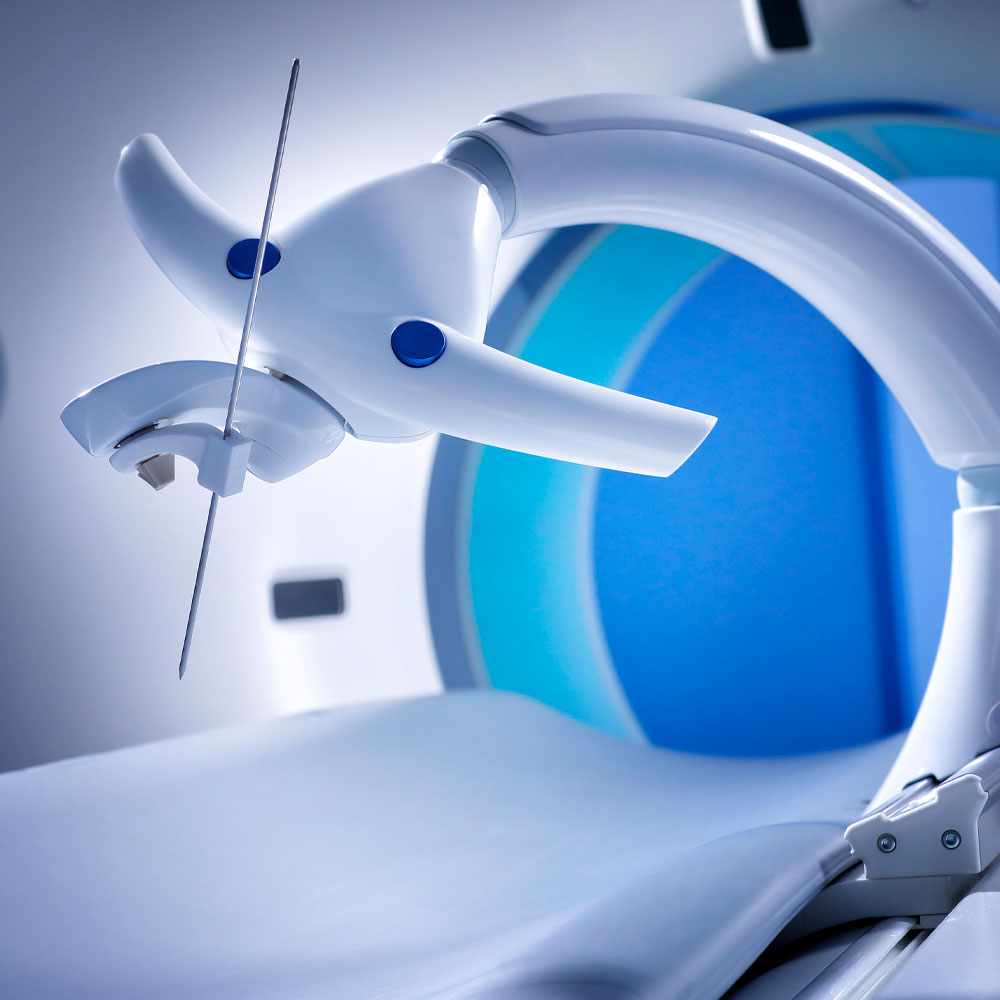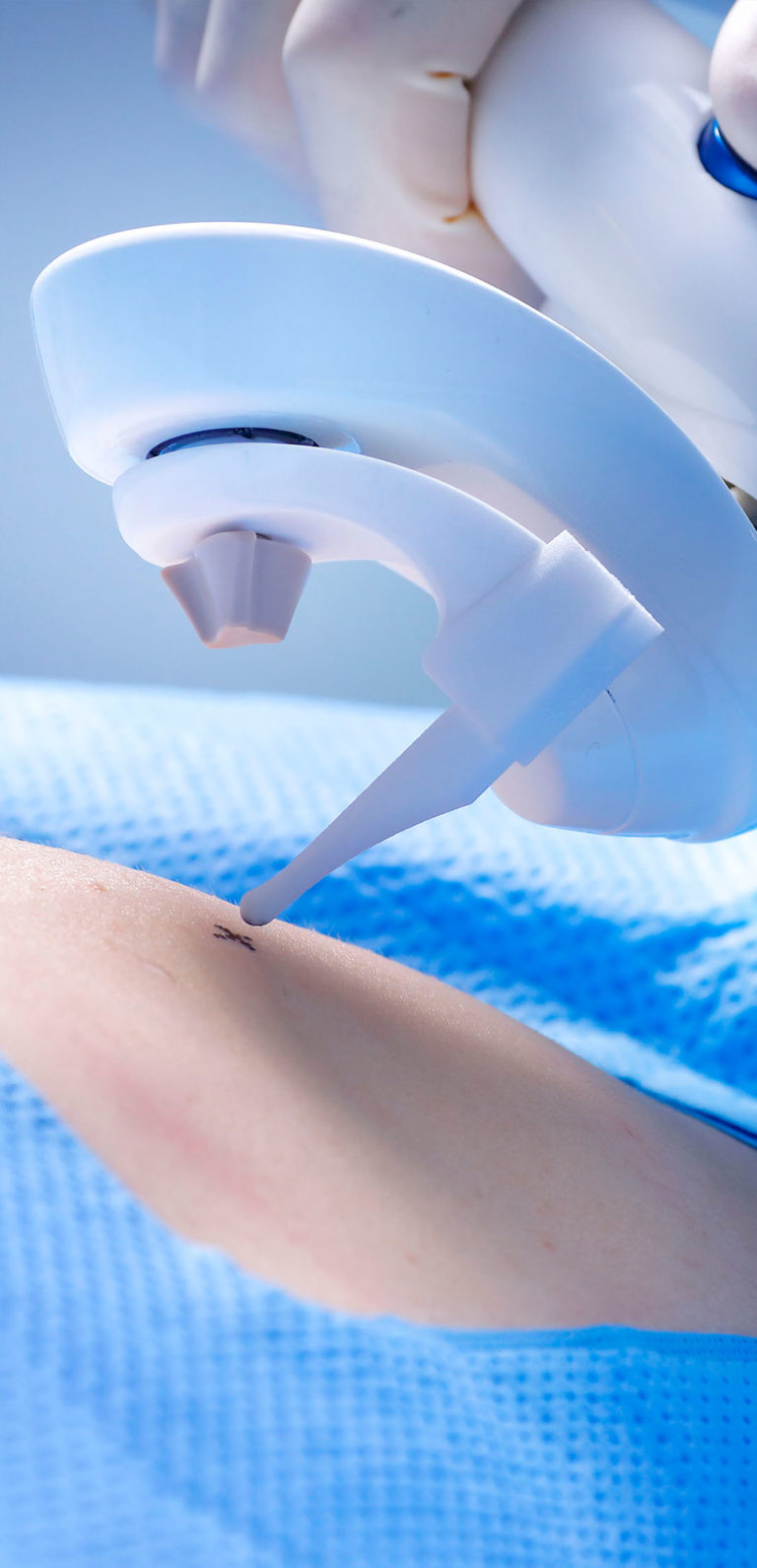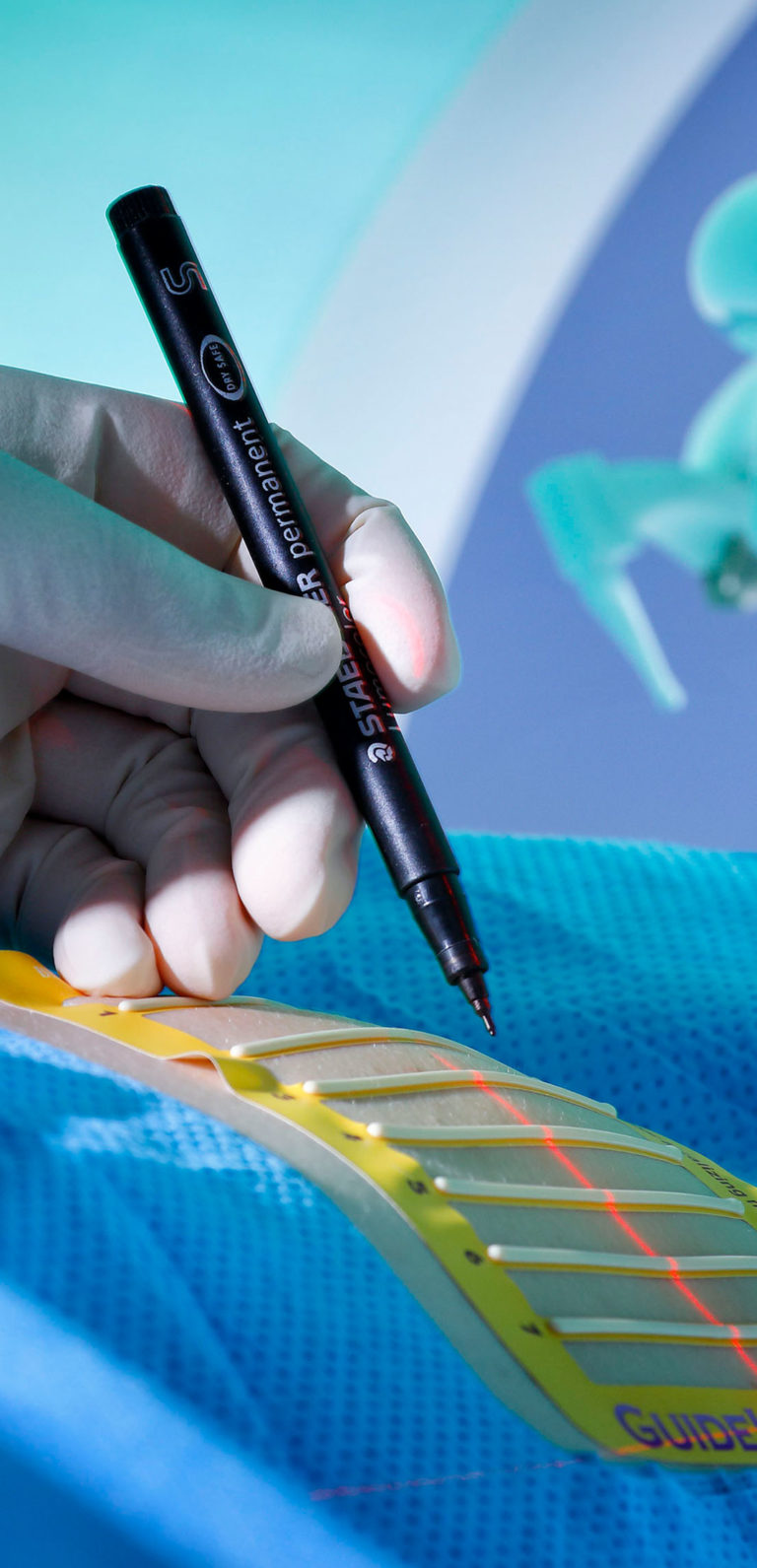needle placement system.
Diagnostics and therapy can impose a heavy burden on patients. Together with physicians and scientists we look for solutions that help improve the patients’ quality of life. An example of this is the needle placement robot for the examination and treatment of liver cancer.
multiple material innovations.
The design encountered various challenges. The system architecture, for one, had to keep any barriers to the use of the system by doctors to the minimum possible, both literally and figuratively. We made sure that the system fits into the tight space between the patient and the CT scanner’s bore. Another challenge was CT compatibility. Commonly used materials can distort the CT image and together with suppliers we therefore developed material innovations for various components.


“our complex design produced a simple device.”
Especially from a mechanical perspective it is a complex device, and yet it looks simple. Its operation is very simple and the device does exactly what the user needs, and no more. The doctor continues to perform the examination, thus accelerating the system’s acceptance in actual practice. As a result, our approach immediately resulted in a cost-effective system.



